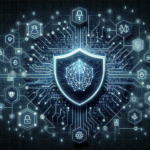Understanding Blockchain Technology
The Basics of Blockchain
Blockchain technology is essentially a decentralized digital ledger that records transactions across multiple computers. This ledger is designed to be secure and immutable, ensuring that once a transaction is added, it cannot be altered retroactively. Each block in the chain contains a number of transactions, and every time a new transaction occurs, a new block is added to the chain.
Current Security Challenges in Blockchain
Despite the inherent security features of blockchain technology, it is not completely immune to risks. One significant challenge is unauthorized access and the potential for hacking. As blockchain systems evolve, so do the methods used by malicious actors to compromise data integrity. Consequently, enhancing security mechanisms continues to be a critical area of focus for developers and researchers alike.
What is Quantum Entanglement?
The Concept of Quantum Entanglement
Quantum entanglement is a phenomenon in quantum physics where two or more particles become interconnected in such a way that the state of one particle can instantly influence the state of another, regardless of the distance separating them. This mysterious connection defies classical physics and opens the door to fascinating applications in various fields, including computing and cryptography.
Implications of Quantum Mechanics for Security
As discussions around quantum entanglement unfold, it naturally extends to its implications for security. Quantum mechanics introduces a level of unpredictability and complexity, which could provide unparalleled advantages in securing data transmissions. This is essential in an age where cyber threats are constantly evolving, pushing the bounds of technological safeguards.
The Intersection of Quantum Entanglement and Blockchain
Quantum Blockchain: A New Paradigm
In recent years, researchers have begun exploring how quantum mechanics can enhance blockchain technology. Quantum blockchain leverages quantum principles, such as entanglement, to create a new type of secure ledger that is fundamentally more resilient against attacks than traditional blockchain systems.
Key Features of Quantum Blockchain
Quantum blockchain systems are designed on several foundational principles:
1. **Immutability** – Like conventional blockchains, quantum blockchains ensure that once a transaction is recorded, it cannot be modified or deleted without substantial effort.
2. **Decentralization** – The distributed nature of blockchain remains, meaning that no single entity has control over the entire network.
3. **Quantum Resistance** – These systems are built to withstand quantum computing threats that can potentially compromise cryptographic algorithms currently used in blockchain technology.
How Quantum Entanglement Enhances Security
Quantum entanglement can enhance blockchain security in several ways:
1. Secure Communication Channels
Quantum entanglement facilitates the creation of ultra-secure communication channels through quantum key distribution (QKD). In this process, two parties can generate a shared encryption key that is theoretically impervious to eavesdropping. If someone attempts to intercept the key, the entangled particles would change states, alerting the communicating parties to the breach.
2. Improved Consensus Mechanisms
The consensus mechanism in a blockchain safeguards the integrity of the network by requiring that all participants agree on the validity of transactions. Quantum entanglement could potentially streamline these processes and speed them up, as entangled particles can transmit information instantaneously over great distances. Greater efficiency can lead to faster transaction times while maintaining security.
3. Enhanced Authentication Processes
The engagement of quantum mechanics, particularly entangled particles, can improve authentication processes across blockchain networks. By embedding quantum cryptographic methods within the network, user identities can be more securely verified, making unauthorized access much more difficult.
Case Studies and Experimental Applications
Several research projects and initiatives have aimed to explore the practical applications of quantum entanglement in blockchain settings.
1. Quantum-Enhanced Crypto Networks
Organizations like ID Quantique have been piloting experiments that integrate quantum key distribution with existing blockchain systems. These experiments aim to evaluate how entangled particles can secure blockchain transactions more efficiently.
2. Research by Academic Institutions
Several universities are at the forefront of research endeavors, including the Massachusetts Institute of Technology (MIT) and the University of California, Berkeley. Their studies often involve theoretical models demonstrating how quantum entanglement can reinforce blockchain security.
Challenges in Implementing Quantum Blockchain
Technical Limitations
Despite the promising potential, there are technical challenges in implementing quantum blockchain networks. Quantum systems are highly sensitive and can be disrupted by environmental factors, making it difficult to maintain the integrity of quantum states over longer distances.
Scalability Issues
Creating a scalable quantum blockchain is another significant hurdle. The complexities involved in managing quantum states across a decentralized network can lead to latency and other performance issues that need to be addressed before practical implementation can become widespread.
Regulatory and Compliance Concerns
As with any emerging technology, regulatory frameworks will need to evolve to accommodate quantum blockchain implementations. Governments and regulatory bodies will likely need to develop new guidelines, security standards, and compliance measures to integrate this technology within existing legal frameworks effectively.
Looking Ahead: The Future of Quantum Entanglement in Blockchain
Prospects for Next-Generation Security
As quantum computing capabilities continue to evolve, the integration of quantum entanglement in blockchain could offer unprecedented levels of security. The prospect of designing systems that are impervious to current and future cyber threats may ultimately redefine how we think about data security and privacy.
Collaborative Efforts and Innovations
Collaborations between quantum physicists, blockchain developers, and cybersecurity experts are essential to explore the best approaches to harness the synergy between these two revolutionary fields. Initiatives supported by both the private sector and academia will likely lead to innovative advancements in secure blockchain networks.
The Broader Implications for Technology
Exploring the interplay between quantum mechanics and blockchain holds broader implications for technology as a whole. Apart from enhancing secure communications and data integrity, this confluence could lead to new applications we have yet to imagine, paving the way for safer digital interactions globally.
In summary, the integration of quantum entanglement in secure blockchain networks is an evolving landscape with the potential to significantly redefine the digital security paradigm. As we continue to explore these interactions, future developments promise to bring innovative solutions that address current and emerging challenges in cybersecurity.








